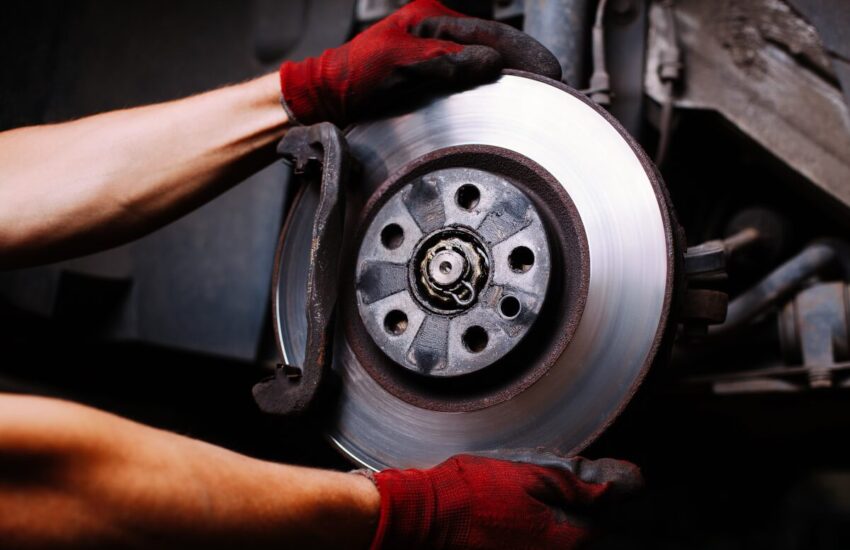Automobile braking systems are integral to road safety. As new car technology has evolved, so has the sophistication of these systems, combining tried-and-true mechanisms with cutting-edge advancements. This article delves into the spectrum of vehicle braking systems, their maintenance, and the considerations around repair and upgrades.
Traditional Automobile Braking Systems
- Drum Brakes: Older but reliable, drum brakes function by brake shoes pushing out against a spinning brake drum, slowing the wheel.
- Disc Brakes: Widely used in modern vehicles, a caliper squeezes brake pads against a rotor, slowing the wheel.
- Anti-lock Braking System (ABS): ABS prevents wheel lock-up during hard braking, allowing drivers to maintain steering control.
- Electronic Brake Distribution (EBD): EBD complements ABS by distributing brake force evenly across all wheels.
Automatic Braking Systems in Modern Vehicles
In recent years, automakers have introduced more sophisticated automobile braking systems that harness advanced sensor technology and integrated software. Two such advancements are the automatic braking systems accompanying adaptive cruise control (ACC) and automatic emergency braking (AEB) systems.
Adaptive Cruise Control (ACC) with Automatic Braking:
What is it? ACC is an advanced version of conventional cruise control. While traditional cruise control maintains a constant speed set by the driver, ACC adjusts the vehicle’s speed based on the traffic conditions. It uses a combination of radar, lasers, and cameras to monitor the vehicle’s surroundings.
How does it work? When a slower-moving vehicle is detected in the same lane, ACC will automatically reduce speed by decelerating or engaging the automatic braking system. Once the road is clear, the ACC will accelerate the vehicle back to the preset speed.
ACC Benefits:
- Enhanced Safety: Reduces the chances of rear-end collisions.
- Driving Comfort: Provides a more relaxed driving experience, especially in heavy traffic conditions.
Automatic Emergency Braking (AEB):
What is it? AEB is a safety system that detects an impending collision and automatically applies the brakes if the driver fails to act in time.
How does it work? Using sensors, cameras, and radar, the AEB system constantly monitors the road ahead. If a potential collision is detected, the system will alert the driver with audio and visual warnings. If the driver does not react quickly enough, the AEB will engage, applying the brakes automatically to either prevent the collision or mitigate its severity.
AEB Benefits:
- Collision Prevention or Reduction: Significantly decreases the severity of frontal collisions or, in some cases, avoids them altogether.
- Increased Safety: Protects not only the vehicle’s occupants but also other road users, including pedestrians and cyclists.
Key Considerations for Advanced Systems
Both ACC with automatic braking and AEB systems are monumental steps forward in vehicle safety. However, there are a few things to keep in mind:
- Complementary, Not a Replacement: These systems are designed to assist the driver, not replace them. Always stay attentive and in control.
- Limitations: The efficiency of these systems can vary based on weather conditions, sensor obstruction, or complex driving scenarios. For instance, fog, heavy rain, or dirt on a sensor can reduce their effectiveness.
- Maintenance: Just as with any other vehicle component, ensure that the sensors and cameras of these systems are regularly checked and cleaned.
Brake Maintenance and When to Inspect
As part of regular car maintenance, maintaining your vehicle’s brakes is pivotal for optimal performance and safety.
Frequency of Inspection:
- Every 10,000 miles: Ideally, during regular oil changes or tire rotations.
- Annually: For vehicles with lower mileage.
- Symptom-triggered: Squealing noises, vibrating brake pedals, or longer stopping distances are signals for immediate inspection.
Comprehensive Brake Inspection Involves:
- Checking brake pads and shoes for wear.
- Examining the rotors or drums for damage.
- Monitoring brake fluid levels and quality.
- Inspecting brake lines and other hydraulic components.
Upgrading Braking Systems: Should You DIY or Go Professional?
While DIY brake jobs can be enticing for enthusiasts, the stakes are high.
DIY Pros and Cons:
Pros: Cost-effective, personal satisfaction, choice of components.
Cons: Need for specialized tools, risk of mistakes, overlooking potential issues.
Professional Pros and Cons:
Pros: Expertise of trained mechanics, quality assurance, service warranties.
Cons: Potentially higher costs.
Wrapping It Up
From the simple drum brake to high-tech AEB, the evolution of braking systems showcases the automotive industry’s commitment to safety. As vehicles become more advanced, understanding and maintaining these systems becomes paramount. Whether you’re a DIY enthusiast or prefer professional touch, prioritizing the health of your braking system ensures not only your safety but also that of everyone on the road.
AutoByPayment.com offers accurate estimates of new and used car loan payments based on self-selected credit score, current rebates, down payment, and trade equity or negative equity, without customers having to provide their personal identifying information such as email and phone.
